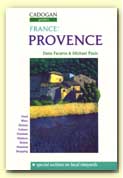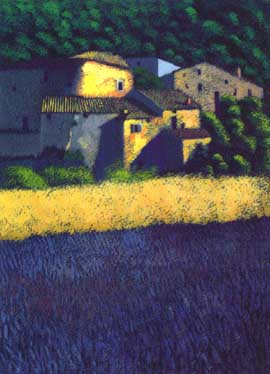 Cadagon Guide to Provence
Cadagon Guide to Provence
Back to Cadogan Guides Overview
Back to Guidebook Series
Browse by Region
 Cadagon Guide to Provence
Cadagon Guide to ProvenceThe sun-drenched landscapes of Provence seduce like few others-the days shot through with the colour of silvery olives, purple mountains, yellow sunflowers, black cypresses and lavender, the nights thrilling, dry and clear and boiling with stars. Vincent Van Gogh, who saw more clearly into the heart of this extravagant world than anyone else, painted these landscapes, and especially those cypresses, as if they were churning and alive, with a lyrical and passionate intensity. Come to the hills around St-Remy when the mistral is up, and you'll se nature imitating art.
We outsiders have had an on-off love affair with the south of France ever since the Romans colonized it and spent their decline lounging around their heated pools. Even the medieval popes and cardinals in Avignon succumbed to its worldly temptations, its wines and the scents of the maquis, its roses and violets, the droning hum of the  cicadas. The painters in the papal court, including some of the greatest artists of the 14th century, lent their radiant Madonnas something of the voluptuous Mediterranean light and colour that would one day inspire Van Gogh and Cezanne, Braque and Picasso; painters whose works have changed the way our eyes see not only the south of France, but the rest of our world as well.
cicadas. The painters in the papal court, including some of the greatest artists of the 14th century, lent their radiant Madonnas something of the voluptuous Mediterranean light and colour that would one day inspire Van Gogh and Cezanne, Braque and Picasso; painters whose works have changed the way our eyes see not only the south of France, but the rest of our world as well.
These days, the world has decided on Provence as its possible paradise. Millions come here every year, hoping to catch a glimpse of it, wishing it didn't have so many second homes, holiday flats, trinket shops and traffic jams. To see the region at its best the delicate question of when to go becomes as crucial as where; in August, the sacred month of French holidays, even the dullest town in Provence can be as frantic as the monkey pit in a zoo. At other times, Provence's essentially classical spirit is easier to grasp-in the lovely countryside around Aix-en-Provence and Cezanne's fetish Mont Ste-Victoire, or the flame-like peaks of the Alpilles or Cubist tile-roofed villages perches in the Luberon, the cliffs and fjord-like calanques off the coast of Marseille, the secret valleys by Mercantour National Park in the Alps, the bullring of Arles and the Roman theatre of Orange, like molten gold in the last rays of the sun. Colourful markets, wild mountains, abandoned Brigadoons or beautifully restored art towns, and restaurants that rival Paris' finest beckon, but perhaps best of all is the leisure in doing as the Romans did and spending the day lounging around the pool, surrounded by perfumed gardens, idly dreaming about what's for lunch. No wonder that Pope Gregory XI, who returned the papacy to Rome in 1377, took one look at the Eternal City and immediately decided to pack his bags to return to the comforts and delights of Avignon. Much to the relief of the Italians, he died before he could go.